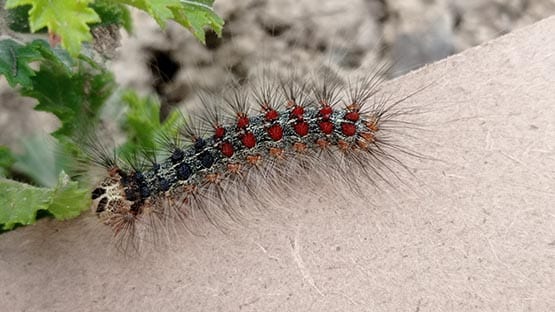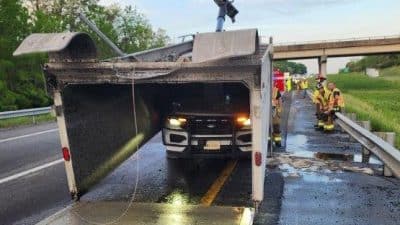
Non-native spongy moth caterpillar numbers have been growing the last two years in the Shenandoah National Park and along the Skyline Drive leading to widespread forest defoliation.
Due to the safety hazards posed from the invasive caterpillar, the park is implementing a spongy moth suppression program to protect visitors in high-use areas and prevent additional damage to the forest habitats.
The goals of the suppression program are to provide visitor safety along Skyline Drive and other developed areas by reducing hazard tree development and to protect sensitive historic and natural areas.
These suppression goals will not eliminate spongy moths from the park completely but will minimize their impacts in specific infestation areas.
The suppression effort at the park is part of a larger effort to suppress spongy moth in the area on a total of more than 16,000 acres mostly on the Washington and Jefferson National Forests.
An aerial pesticide will be distributed on a total of 3,150 acres in the Shenandoah National Park.
The spray window will likely be from May 15 through May 17 or May 20 through May 21, but is subject to change due to weather.
Visitors who are planning to travel to the park during the spraying window should visit the spongy moth page on the National Park Service website.
NPS: Aerial spraying plan
- Aerial spraying will take place along sections of Skyline Drive (miles 39 to 51) and in the Skyland and Big Meadows areas
- Areas will be sprayed from a specialized helicopter between 6:30 a.m. and noon on two mornings
- Treatment areas were chosen based on egg mass population surveys during the fall of 2023 and aerial defoliation mapping conducted by the Virginia Department of Forestry in June 2023
- The park will be using a naturally occurring bacteria – Bacillus thuringiensis var. Kurstaki, or Btk, as an aerial pesticide
- Btk is widespread in natural ecosystems and is not harmful to humans, pets, plants or most beneficial insects, according to the National Park Service
- Btk is registered with the U.S. Environmental Protection Agency and is sanctioned by the U.S. Department of Agriculture for use against spongy moths










